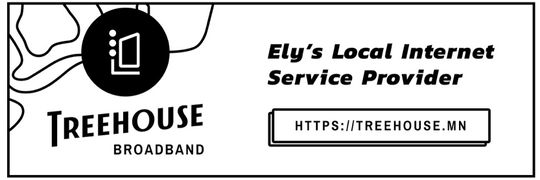The U.S. Forest Service is starting to gather input from Tribes, local communities, interested parties and the broader public regarding management of the Boundary Waters Canoe Area management area, beginning March 29 through May 17. Based on the current management situation and that the Forest Plan direction for the BWCAW is over 30 years old, Forest Service is considering making an amendment to update and modernize Forest Plan direction for the BWCAW.
Public comments can be made through May 17 on the project web page electronically, or in hard copy submitted to: Superior National Forest, RE: BWCAW Forest Plan Amendment, 8901 Grand Ave. Place, Duluth, MN 55808 An open house event will be held Thursday, April 11, from 4:30-7 p.m. at the Forest Service headquarters at 8901 Grand Avenue Place in Duluth.
A virtual open house will be held on Thursday, April 18, from 4-6 p.m. via Microsoft Teams (Meeting ID: 289 483 854 876, Passcode: XPqvvs or call in (audio only) +1 202-650-0123, 407805385# “Changes to our forest plan can better position the Forest to restore and preserve wilderness character and meet the purposes of wilderness described in the 1964 Wilderness Act and 1978 BWCAW Act,” said Superior National Forest Supervisor Tom Hall. “The management direction for the BWCAW was last updated in 1993. Our implementation and monitoring over the past 30 years, and changes to national wilderness management policy and guidance, has highlighted several issues affecting wilderness character in the BWCAW and the wilderness experience for visitors.”
The issues to be addressed in a wilderness chapter forest plan amendment include, but are not limited to the following: • Increasing visitation and changing trends in utilizing public lands and primitive management areas in general is adversely impacting all four management areas of the BWCA; in particular high use campsites and travel routes, as well as previously under visited primitive and pristine areas utilized to escape people and crowding in popular locations. Monitoring has indicated both social and ecological impacts, such as crowding, noise, light pollution, lack of campsite availability, littering, campsite and portage erosion, campsite expansions, water quality degradation, and other issues preventing the Forest from managing to standard. There is a need to update management direction to preserve wilderness character to provide opportunities for solitude or a primitive and unconfined type of recreation, restore naturalness, limit development and trammeling actions, and protect other features of value across the BWCA.
• The BWCA towboat prescoping notice sent out in August 2023 garnered over 1,300 comments. The primary issues identified from input in that prescoping outreach related to how towboats are managed in the overall motorboat cap within the BWCA and the impact that towboats have on wilderness character. Management of the towboat commercial service is just one aspect of the larger whole related to both motorized use and wilderness character. To effectively manage commercial towboat use in the BWCA, management direction in the existing forest plan concerning commercial towboats may need to be updated to address specific standards and guidelines to continue to preserve wilderness character and ensure compliance with the statutory limits set in the 1978 act. In addition to commercial towboat use, there is a need to consider the context of motorized use in general within the BWCA, as provided for by existing law.
• Much of the Superior National Forest has fire-adapted ecosystems and large fires have occurred periodically on the landscape. The current forest plan contains projectspecific plan amendments to allow management-ignited prescribed fire in the BWCAW on a project-by- project basis over the past 25 years. Where multiple project-specific plan amendments are done for a given issue, it suggests consideration towards a programmatic plan amendment to allow lightning fires to play a more natural role.
• Additional management topics include, but are not limited to fisheries stocking, survey and spawn take; commercial outfitter and guide operations; visitor use management (overnight paddle and hiking quota, campsites); special provisions; structures; other agency use; wilderness education plans; the reservation system and research needs.
Refinements and changes to this list of issues may occur through the environmental review process that the Forest Service uses to develop the purpose and need, and proposed action for this plan amendment. In addition to these issues, there is also an opportunity to modernize the content of the wilderness chapter of the forest plan to meet the requirements of the 2012 planning rule. For example, each plan component needs to be identified by type (desired condition, goal, objective, standard, guideline, or suitability). More information on the current management situation and preliminary need for change may be found by reviewing the wilderness section of the 2020-2021 Forest Monitoring and Evaluation Report.
Based on public comments and input, as well as applicable law, regulation, policy, and guidance, the Forest Service will develop a proposed forest plan amendment to address the purpose and need for action. The agency will then notify stakeholders and partners of the proposed amendment and initiate the public involvement process under the National Environmental Policy Act (NEPA). Formal public scoping for this project is anticipated in early 2025.










